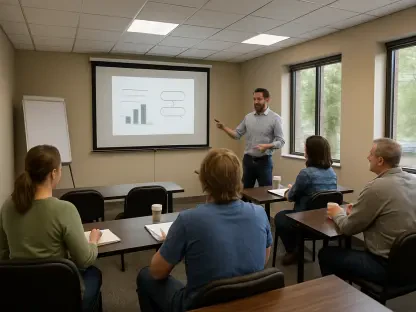Higher education remains a vital pathway out of poverty, yet for many low-income students, access to colleges that genuinely support their success is frustratingly out of reach, with only a tiny fraction of institutions—less than 6% of four-year colleges in the United States—excelling in both enrolling and graduating significant numbers of Pell Grant recipients. These students often come from economically disadvantaged backgrounds, and the standout schools, dubbed “equity engines,” offer a beacon of hope in an otherwise uneven landscape of educational opportunity. This roundup dives into diverse perspectives from higher education experts, researchers, and policy advocates to explore what makes these colleges exceptional, why they are so rare, and how their impact can be scaled to serve more students in need.
Defining the Challenge: Equity in Higher Education
The concept of equity engines highlights institutions where at least 34% of students receive Pell Grants and at least 55% of those students graduate with a bachelor’s degree within six years. Such colleges are pivotal in fostering social mobility, yet their scarcity raises urgent questions about systemic barriers in higher education. Insights from various studies underscore that while some schools achieve remarkable outcomes for low-income students, the majority struggle to balance access with completion rates, often leaving disadvantaged learners behind.
Geographic disparities further complicate the issue, as these high-performing institutions are not evenly spread across the country. Experts point out that many regions, particularly in high-poverty areas, lack access to such transformative schools, creating a significant obstacle for students who cannot relocate. This roundup aims to synthesize opinions on why equity engines are so rare and what strategies could help expand their reach, drawing from a range of voices in the field.
Insights on Rarity and Systemic Barriers
Scarcity of Success: Why So Few Colleges Qualify
Out of over 1,500 four-year institutions analyzed in recent research, a mere 91 meet the strict criteria to be classified as equity engines. Scholars in higher education note that this rarity stems from a combination of limited resources, inconsistent institutional priorities, and structural challenges that hinder support for low-income students. Many colleges lack the funding or framework to implement programs that boost retention and graduation rates for this demographic.
Policy analysts add that the diverse nature of higher education institutions makes it difficult to replicate success across different contexts. While some schools have developed targeted interventions, others face entrenched issues like inadequate academic advising or financial aid gaps. The consensus among experts is that without systemic reform, the number of colleges achieving equity engine status will remain disappointingly low.
A further complication lies in the tension between access and outcomes. Some researchers argue that institutions often prioritize one over the other—either enrolling large numbers of Pell Grant students without sufficient support or focusing on high graduation rates by limiting access. Bridging this gap requires innovative approaches that many colleges have yet to adopt.
Geographic Disparities: Access Denied in Key Regions
The distribution of equity engines reveals a troubling pattern of spatial injustice, with these colleges concentrated in just 26 states. Advocates for educational equity emphasize that regions with high poverty rates, especially in the South, are frequently left without nearby institutions that effectively serve low-income students. This uneven spread exacerbates economic divides, limiting opportunities for upward mobility in underserved areas.
Some policy experts suggest that state-level investments could address these geographic gaps by targeting colleges on the cusp of becoming equity engines. However, they caution that over half of these high-performing schools are private, which complicates public funding strategies. The challenge, then, is to create incentives that encourage both public and private institutions to prioritize Pell Grant student success regardless of location.
Another perspective focuses on the broader societal impact of this imbalance. Without accessible equity engines, entire communities risk being locked out of the benefits of higher education, perpetuating cycles of poverty. This viewpoint underscores the urgency of addressing spatial inequities through coordinated policy efforts and regional collaboration.
Models of Success: What Works for Pell Grant Students
Variety in Victory: Diverse Institutional Approaches
Among the 91 equity engines, a striking diversity exists, ranging from regional public universities to small religious colleges and historically Black colleges and universities (HBCUs). Higher education leaders highlight that this variety proves success is not tied to a single institutional type or level of funding. Instead, commitment to student support appears to be the unifying factor across these schools.
Specific examples, such as a public university in a major urban center achieving a 58% six-year graduation rate for Pell Grant students, demonstrate how tailored strategies can yield results. Experts note that these institutions often implement flexible scheduling, robust mentoring programs, and emergency financial aid to address the unique challenges faced by low-income learners. Such practices challenge the notion that only elite schools can support disadvantaged students effectively.
A key takeaway from this diversity is the potential for broader application. Some analysts argue that if small or underfunded colleges can become equity engines through intentional efforts, then larger or better-resourced institutions should be able to follow suit. This perspective encourages a shift in focus toward institutional will rather than financial capacity as the primary driver of change.
Beyond Degrees: Economic Outcomes Matter
While graduation rates are a critical metric, many experts stress that post-graduation economic outcomes are equally important for Pell Grant recipients. Industry leaders in higher education policy point out that the value of a degree can vary widely depending on the institution and program, with some graduates still struggling to achieve financial stability despite earning their credentials.
Support systems like evening classes, online learning options, and campus transportation are often cited as essential for helping students balance education with work or family responsibilities. However, advocates argue that colleges must also focus on career preparation and connections to high-demand fields to ensure long-term benefits. This dual emphasis on completion and economic return is seen as the next frontier for equity engines.
Future research is expected to delve deeper into balancing these priorities. Some scholars suggest that upcoming studies, starting from this year through 2027, will likely uncover actionable strategies for aligning graduation success with meaningful career outcomes. Such insights could provide a roadmap for colleges aiming to enhance their impact on low-income students.
Strategies to Scale Equity in Higher Education
Sharing Best Practices: Learning from Leaders
One widely agreed-upon strategy to increase the number of equity engines is the adoption of best practices from existing high-performers. Educational consultants recommend that colleges invest in comprehensive student support services, such as academic coaching and mental health resources, which have proven effective in boosting retention among Pell Grant recipients. Sharing these approaches through collaborative networks could accelerate progress across institutions.
State governments are also seen as key players in this effort. Some policy experts propose targeted funding for colleges nearing equity engine status, particularly those in underserved regions. This approach, they argue, could help bridge the gap between current performance and the thresholds needed to transform outcomes for low-income students.
A complementary viewpoint focuses on organizational change within colleges themselves. Leaders in higher education administration emphasize that institutional culture must shift to prioritize equity at every level, from admissions policies to graduation initiatives. Without this internal commitment, external investments may fall short of creating lasting impact.
Policy and Advocacy: Building Systemic Change
Beyond individual institutions, broader policy reform is critical to addressing the systemic barriers that limit the emergence of equity engines. Advocacy groups call for federal and state policies that incentivize colleges to focus on Pell Grant student success, potentially through performance-based funding models. Such measures could encourage more schools to adopt equity-focused strategies.
Another perspective centers on community engagement as a catalyst for change. Some experts suggest that local stakeholders, including businesses and nonprofit organizations, can play a role in supporting nearby colleges to better serve low-income students. Partnerships that provide internships, scholarships, or mentorship opportunities are often highlighted as practical ways to enhance student outcomes.
Finally, there is a push for greater accountability in higher education. Analysts argue that transparent reporting on enrollment and graduation rates for Pell Grant students could pressure underperforming institutions to improve. This data-driven approach is seen as a way to hold colleges responsible while guiding resources toward areas of greatest need.
Reflecting on the Path Forward
Looking back on the discussions surrounding equity engines, it becomes clear that while a small number of colleges achieve remarkable success in supporting Pell Grant students, the broader system falls short for many. The insights gathered from diverse experts paint a picture of both opportunity and challenge, with geographic disparities and economic outcomes emerging as critical areas of concern. The rarity of these high-performing institutions underscores the depth of structural inequities that persist in higher education.
Moving ahead, actionable steps emerge as a focal point for progress. Colleges are encouraged to adopt proven support mechanisms like flexible scheduling and career-focused programs, while policymakers are urged to prioritize investments in regions lacking access to equity engines. Further exploration of upcoming research is recommended to uncover detailed strategies for scaling success, offering hope for a more inclusive future in higher education.








